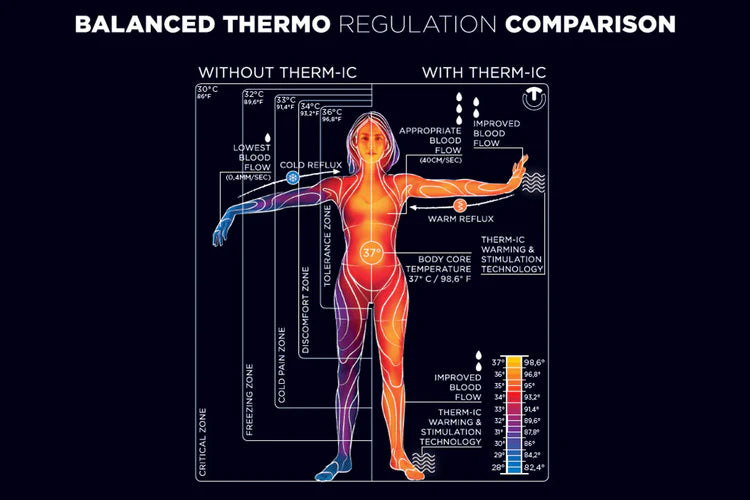What is Thermoregulation?
What is Thermoregulation ?
Man is a superman. A being with exceptional resistance. An organism with capacities that allow survival in all conditions. From the cold of the Siberian steppes to the heat of the Arabian desert, from the humidity of the Amazonian forests to the Himalayan mountains, man adapts.
This is thanks to natural mechanisms by which he acclimatises and self-regulates his environment. This is how his body climate works. Regardless of the environment, humans seek to maintain their bodies at a constant temperature. Man is therefore a "warm-blooded" being, known as a homeotherm: whatever the external conditions, he regulates his internal temperature around an average target value of 37°C. Why do we do this? Because it is at 37°C that our metabolic and muscular functioning is optimal. In other words, it is at 37°C that our cells and muscles are most efficient. To be more precise, this body temperature oscillates between 36.1°C, in the middle of the night, at the moment when metabolic functioning is at its most calm, and 37.8°C, at the end of the afternoon, at the time of peak activity. Although humans are homeothermic, some species such as lizards are said to be poikilothermic. This means that their internal temperature is equivalent to that of the ambient air. This is why it is important to keep your body and extremities at a regular temperature, whatever the temperature and conditions. Therm-ic products will help protect you from these temperature changes.

Balanced Thermoregulation
Our body operates at 37° C as long as the blood flow functions at a normal rate. The flow rate depends on temperature and pressure. It is highest in the body core (40cm/sec) and up to 1/1000 times lower (0,4mm/sec) when it finally reaches the most distant extremities (fingers, toes) and before it pushes back to the core. The blood has now reached its lowest speed, is the coldest and uses additional energy to keep flowing. This process can result in cold pain or even hypothermia (undercooling). At an outside temperature below 0° C, the hands and feet can reach levels as low as 28° C.

Muscle Power and Endurance Comparison
Up to 75% of our muscle power falls victim to the cold. When cold pain is reported to the brain, over 90% of the available energy is sent to warm the affected muscles. This results in reduced muscle power and endurance as well as shivering.

Hand Challenge Comparison
The skin is a complex organ with 93% cold sensors and 7% warm sensors. The sensitive structure consists of two mutually dependent layers, the outer epidermis and internal dermis, which rest on a thin brown fat layer serving as insulation. The functionality of the hand is ensured when the blood circulation works at a normal rate. At the hands and feet, and especially in the case of women, the skin surface is disproportionally larger compared to the overall volume and the thickness of fat insulation, causing an exceptional sensitivity to cold and deceleration of the blood circulation.

Comfort Zone
It is important to take care of our hands and feet in all circumstances. When the body’s endogenous insulation is insufficient, external insulation is necessary for a balanced body temperature and well-being. The aim is to keep your body in the ideal comfort zone, i.e. a temperature of 37° C.
 Liquid error (sections/image-banner line 93): invalid url input
Liquid error (sections/image-banner line 93): invalid url input